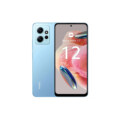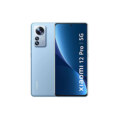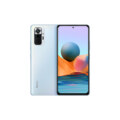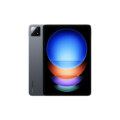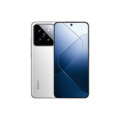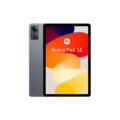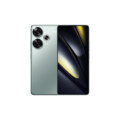Xiaomi Poco F3


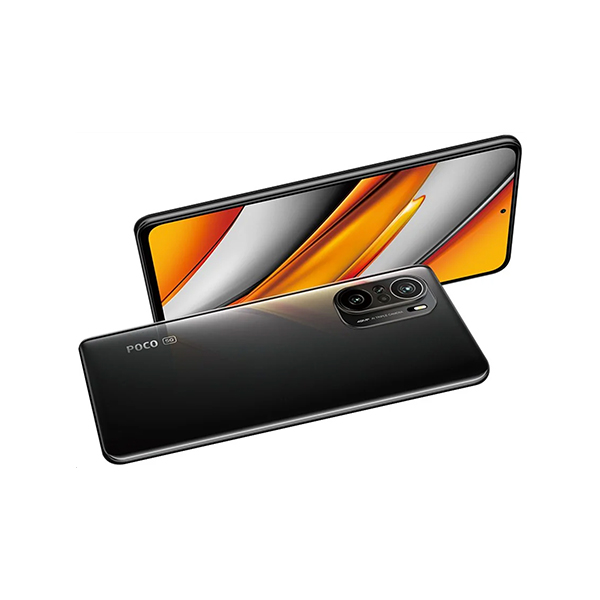
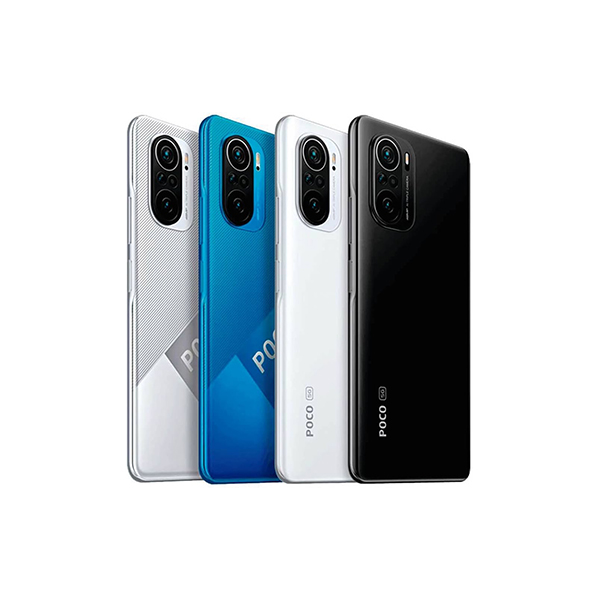
Specs
General
| Device Type | Xiaomi Redmi Phone |
| Announced | 22 March, 2021 |
| Released | 27 March, 2021 |
| Status | Available |
Design
| Water Resistant | IP54, dust and splash resistant |
| Dimensions | 163.7 x 76.4 x 7.8 mm |
| Weight | 196 g |
| Protection | Glass front (Gorilla Glass 5), glass back (Gorilla Glass 5), plastic frame |
| Colors | Arctic White, Night Black, Deep Ocean Blue |
Display
| Refresh Rate | 120 Hz |
| Display Type Display Technology => A number of display technologies and types used in mobile phones => TFT (Thin Film Transistor), IPS (In-Place Switching), OLED (Organic Light Emitting Diode), AMOLED (Active-Matrix Organic Light-Emitting Diode), Super AMOLED (an even advanced version of AMOLED), Resistive Touchscreen (Resistive touchscreens contain two layer of conductive material with a very small gap between them which acts as a resistance), Capacitive Touchsceen (Capacitive touchscreen technology consists of a layer of glass coated with a transparent conductor) | AMOLED |
| Size | 6.67 Inches |
| Resolution | 1220 x 2400 Pixels |
| Display Colors Display Colors is refers to the number of different shades of colors that the screen is capable of displaying => 64K colors, 256K colors and 16 million colors, Obviously 16M is highest available range of colors and better than others. | 68B |
| Pixel Density Pixel Density (PPI) is refers to the concentration of pixels on a particular display, measured in pixels per inch (ppi). Pixel density is calculated by dividing the diagonal pixel resolution of a display by its diagonal size, higher pixel density better display quality. | ~395 ppi |
| Touch Screen | Capacitive Touchscreen, Multitouch |
| Display Protection Display Protection => Gorilla Glass is a special alkali-aluminosilicate glass shield with exceptional damage resistance that helps protect mobile displays from scratches, drops, and bumps of everyday use, It is always better to go for a smartphone with Gorilla Glass for that added protection and peace of mind. | Corning Gorilla Glass 5 |
| Features | HDR10+, 1300 nits (peak) |
| Secondary Display | No |
Camera
| Front Camera | 20 MP, f/2.5, (wide), 1/3.4", 0.8µm |
| Camera Setup | Triple |
| Main Camera Camera is able to capture photographs and usually videos, The most important characteristics of a camera are the resolution (measured in megapixels), lens focus type (fixed or automatic), higher megapixel cameras are known to capture higher quality photos, but not always a good measurement of the photos quality. |
48 MP, f/1.8, 26mm (wide), 1/2.0", 0.8µm, PDAF 8 MP, f/2.2, 119˚ (ultrawide) 5 MP, f/2.4, 50mm (macro), 1/5.0", 1.12µm, AF |
| Image | 12000 x 9000 pixels |
| Video | 4K@30fps, 1080p@30/60/120/240/960fps, gyro-EIS |
| Camera Features | Geo-tagging, touch focus, face detection, HDR, panorama |
| Flash Flash Light => There is commonly two types of flash lights are used in camera mobile phones, LED Flash (LED flash offers lower power consumption with drive circuitry that takes up very little room, LEDs can be strobed faster than any other light source), Xenon Flash (xenon flash produces an extremely intense full-spectrum white light for a very short duration) | LED flash, HDR, panorama |
Hardware
| Operating System OS => Every computer system run on a base software called Operating System (OS). Operating System controls all basic operations of the computer (such as smartphone, PDAs, tablet computers and other handheld devices). The Operating System allows the user to install and run third party applications (apps), apps are used to add new functionality to the device. | Android 11 |
| Chipset Chipset is a group of integrated circuits designed to perform one or a more dedicated functions, often with real time computing constraints, Popular smartphones are equipped with more advanced embedded chipsets that can do many different tasks depending on their programming. | Qualcomm Snapdragon 870 5G |
| CPU CPU (Central Processing Unit) mostly known as processors, CPU processes instructions in order to carry out certain functions that make your device operate properly. Processors are often described as the brain of computers, smartphones and tablets, Smartphones and tablets rely on processors to carry out their every task, Processors are an incredibly important factor in selecting any type of computing device, including your smartphone. | Octa-core (1 x 3.2 GHz Kryo 585 + 3 x 2.42 GHz Kryo 585 + 4 x 1.80 GHz Kryo 585) |
| Architecture | 64 bit |
| Fabrication | 7 nm |
| GPU GPU (Graphics Processing Unit) is a single-chip processor designed to rapidly manipulate and alter memory to accelerate the creation of images in a frame buffer intended for output to a display, This includes things such as lighting effects, object transformations, and 3D motion. | Adreno 650 |
| RAM (Memory) RAM (Random Access Memory) is a type of computer memory that can be accessed randomly, any byte of memory can be accessed without touching the preceding bytes that allows information to be stored and accessed quickly from random locations. RAM is the most common type of memory found in computer systems, smartphones, tablets and other electronic devices. | 8 GB |
| Internal Storage Internal Storage is a data storage space (flash memory) mostly used in smartphones, tablets and other electronic devices where operating system, apps, music, photos, videos, files and other user data Is stored. | 256 GB |
| Card Slot Memory Card Slot is a special slot for inserting a memory card. Memory cards allow you to expand the phone's built-in memory, A memory card (sometimes called a flash memory card or a storage card) is a small storage medium used to store data such as text, pictures, audio, and video, for use on small, portable or remote computing devices such as mobile phones, mp3 players, digital cameras. | |
| Sensors Sensors are electronic components that detects and responds to some type of input from the physical environment. The specific input could be light, heat, motion, moisture, pressure and location, The output is generally a signal that is converted to use in computing systems, a location sensor, such as a GPS receiver is able to detect current location of your electronic device. | Side-mounted fingerprint sensor, Accelerometer, Gyroscope, Proximity, Compass |
Network
| SIM TYPE SIM (Subscriber Identity Module) is a small card that contains mobile network subscriber's account information. This allows the phone using the card to attach to a mobile network. The SIM card is most commonly associated with GSM and UMTS mobile networks. Moving a SIM card from one phone to another allows a subscriber to switch mobile phones without having to contact their mobile network carrier. SIM cards can also be used by a phone to store limited amounts of data, such as phone numbers and text messages. | Nano SIM |
| SIM Technology | Dual Sim, Dual Standby (Nano-SIM) |
| 2G Network | GSM 850 / 900 / 1800 / 1900 |
| 3G Network | HSDPA 850 / 900 / 1700(AWS) / 1900 / 2100 |
| 4G Network | LTE band 1(2100), 3(1800), 5(850), 7(2600), 8(900), 40(2300), 41(2500) |
| 5G Network | 5G SA/NSA |
Multimedia
| FM Radio | |
| Stereo Speakers | YES |
| Loudspeaker | YES |
| Audio Jack | NO |
| Audio Features | Hi-Res Audio certification, Dolby Atmos support |
Connectivity
| Wi-fi Wi-Fi is a popular wireless networking technology using radio waves to provide high-speed network connections that allows devices to communicate without cords or cables, Wi-Fi is increasingly becoming the preferred mode of internet connectivity all over the world. | Wi-Fi 802.11 a/b/g/n/ac/6, dual-band, Wi-Fi Direct |
| Bluetooth Bluetooth is a wireless communications technology for exchanging data between mobile phones, headsets, computers and other network devices over short distances without wires, Bluetooth technology was primarily designed to support simple wireless networking of personal consumer devices. | 5.1, A2DP, LE |
| GPS GPS The Global Positioning System is a satellite-based radio navigation system, GPS permits users to determine their position, velocity and the time 24 hours a day, in all weather, anywhere in the world, In order to locate your position, your device or GPS receiver must have a clear view of the sky. | A-GPS, GLONASS, BDS, GALILEO |
| USB | USB Type-C 2.0, USB On-The-Go |
| EDGE EDGE (Enhanced Data GSM Environment) is a wireless network technology generally considered the next step in the 2G network offers data transfer rates up to four times faster than ordinary GSM networks, Generally, EDGE is used for the purpose of wireless data transfer, such as sharing pictures and videos or browsing the Internet via a mobile phone connection. | |
| GPRS GPRS (General Packet Radio Service) is a packet oriented mobile data service on the 2G and 3G cellular communication system's global system for mobile communications (GSM), Generally, GPRS is used for the purpose of wireless data transfer, such as sharing pictures and videos or browsing the Internet via a mobile phone connection. | |
| Speed | 3G (HSPA 42.2/5.76 Mbps), 4G LTE-A, 5G capable |
| Wi-fi Hotspot | |
| NFC NFC (Near field communication) is a set of standards for smartphones and similar devices to establish peer-to-peer radio communications with each other by touching them together or bringing them into proximity, usually no more than a few inches. |
Features
| Messaging | SMS(threaded view), MMS, Email, Push Mail, IM |
| Web Browser Web Browser => a web browser is a software application used to locate, retrieve and display content on the World Wide Web, including Web pages, images, video and other files, The primary function of a web browser is to render HTML, the code used to design or markup webpages. | HTML5 |
| Games | Built-in + Downloadable |
| Torch |
Battery
| Battery Type Battery Type => Cell phones run on various kinds of batteries depending on the manufacturer, phone size or shape and features. There are basically four types of cell phone batteries => Lithium Polymer, Lithium Ion, Nickel Metal Hydride and Nickel Cadmium. | Li-Ion (Lithium Ion) |
| Capacity Battery Capacity is a measure (typically in Amp-hr) of the charge stored by the battery, and is determined by the mass of active material contained in the battery. The battery capacity represents the maximum amount of energy that can be extracted from the battery under certain conditions. | 4520 mAh |
| Placement | Non-removable |
| Wireless Charging Wireless Charging (Inductive Charging) uses an electromagnetic field to transfer energy between two objects. This is usually done with a charging station. Energy is sent through an inductive coupling to an electrical device, which can then use that energy to charge batteries or run the device. | No |
| Standby Standby Time is the total amount of time that you can leave your is fully charged, turned on and ready to send and receive calls or data transmissions before completely discharging the battery. | Up to 2 days (Expected) |
| Talk Time Talk Time is the longest time that a single battery charge will last when you are constantly talking on the phone under perfect conditions, Ambient temperature and highly dependent on the cellular network environment such as the distance to the closest cell network tower. | Up to 24 hours (Expected) |
| Music Play | Up to 90 hours (Expected) |
| Extra |
Fast charging 33W 100% in 52 min (advertised) Power Delivery 3.0, Quick Charge 3+ |
Xiaomi Poco F3: Detailed Review
The Xiaomi Poco F3 is a mid-range powerhouse launched in March 2021, offering flagship-level specs at an affordable price. With a high refresh rate AMOLED display, the powerful Snapdragon 870 chipset, and solid build quality, the Poco F3 stands out as one of the best budget performance phones in its category. It brings a premium experience typically reserved for higher-end devices while keeping the price down, making it a strong contender for budget-conscious buyers.
Here’s a detailed review of the Xiaomi Poco F3 with its pros and cons.
Specifications
- Display: 6.67-inch AMOLED, 120Hz refresh rate, FHD+ (2400 x 1080) resolution
- Processor: Qualcomm Snapdragon 870 5G
- RAM: 6GB or 8GB LPDDR5
- Storage: 128GB or 256GB UFS 3.1
- Rear Cameras:
- 48 MP (main, f/1.8, PDAF)
- 8 MP (ultrawide, f/2.2, 119-degree FOV)
- 5 MP (macro, f/2.4, telemacro)
- Front Camera: 20 MP (f/2.5)
- Battery: 4520 mAh, 33W fast charging
- Operating System: MIUI 12 based on Android 11 (upgradable to MIUI 14/Android 13)
- Other Features: 5G support, Stereo speakers, IP53 splash resistance, Side-mounted fingerprint sensor
Design & Build Quality
Design:
The Poco F3 sports a sleek and modern design with a premium look. It features a glass front and back, giving it a flagship feel despite its mid-range pricing. The phone’s slim profile and lightweight design make it easy to handle, and the rear camera bump is minimal, contributing to a clean aesthetic.
Build Quality:
The device feels solid and well-built with Corning Gorilla Glass 5 on both the front and back. The side-mounted fingerprint sensor is fast and conveniently located. The IP53 rating offers some protection against dust and water splashes, though it isn’t fully waterproof.
Colors:
The Poco F3 comes in three attractive colors:
- Arctic White
- Night Black
- Deep Ocean Blue
Display
Specifications:
- Size: 6.67-inch AMOLED
- Resolution: FHD+ (2400 x 1080)
- Refresh Rate: 120Hz
- Brightness: 1300 nits peak
- HDR Support: HDR10+
Performance:
The display is one of the best features of the Poco F3. It boasts a 6.67-inch AMOLED panel with a smooth 120Hz refresh rate and HDR10+ support, delivering vibrant colors, deep blacks, and excellent contrast. The high refresh rate ensures fluid animations and scrolling, providing a great user experience for gaming and everyday use.
Outdoor visibility is excellent thanks to the 1300-nit peak brightness, making it easy to use in direct sunlight. The phone’s touch sampling rate of 360Hz also enhances responsiveness, making it a good option for gamers who need precision and quick reactions.
Performance
Processor & RAM:
The Poco F3 is powered by the Qualcomm Snapdragon 870 chipset, which is a slightly overclocked version of the Snapdragon 865+. It delivers near-flagship performance at a lower price. The phone is available with 6GB or 8GB of LPDDR5 RAM, providing fast and efficient multitasking.
Whether you’re gaming, streaming, or running multiple apps, the Poco F3 handles everything smoothly with no noticeable lag. Heavy games like Genshin Impact and Call of Duty: Mobile run smoothly at high settings, thanks to the Adreno 650 GPU.
Storage:
The phone comes with 128GB or 256GB of UFS 3.1 storage, ensuring fast read and write speeds. However, it does not support expandable storage via a microSD card, which might be a downside for users who need more space.
Camera System
Main Camera: 48 MP (f/1.8)
The primary 48 MP camera captures detailed photos in good lighting conditions with vibrant colors and sharpness. However, it struggles a bit in low light, with some noise and loss of detail. The camera app’s Night Mode helps brighten darker scenes, but results are average compared to more expensive phones.
Ultrawide Camera: 8 MP (f/2.2)
The 8 MP ultrawide camera offers a 119-degree field of view, making it great for capturing landscapes and group photos. However, like most mid-range ultrawide cameras, it suffers from softer details, especially at the edges of the frame, and performs less impressively in low-light conditions.
Macro Camera: 5 MP (f/2.4)
The 5 MP telemacro lens is one of the better macro sensors in this price range. It allows for close-up shots with good detail, though its use cases are niche, and it’s not a feature many users will use regularly.
Front Camera: 20 MP (f/2.5)
The 20 MP front-facing camera performs well in good lighting, producing clear and detailed selfies. It also supports AI beautification and portrait mode with background blur, though the results can be hit or miss in lower light settings.
Video:
The Poco F3 can shoot 4K video at 30fps with the main camera. The video quality is good with stable footage, thanks to EIS (Electronic Image Stabilization). The ultrawide and front cameras, however, are limited to 1080p recording.
Battery Life
Capacity: 4520 mAh
The 4520 mAh battery provides solid endurance, lasting a full day of moderate to heavy use, including gaming, video streaming, and multitasking. Power users might need to top up in the evening, but the phone’s power efficiency ensures good battery life overall.
Charging: 33W fast charging
The phone supports 33W fast charging, allowing it to charge from 0 to 100% in just under an hour. It’s a convenient feature for users who need quick top-ups throughout the day, although wireless charging is not supported.
Software & Features
Operating System:
The Poco F3 runs MIUI 12, based on Android 11 (upgradable to MIUI 14/Android 13). MIUI is highly customizable with various features, such as gesture controls, floating windows, and a dark mode. However, the interface comes with some bloatware and ads, which might not appeal to all users. While the ads can be turned off, it takes some tinkering.
Other Features:
- Stereo Speakers: The dual speakers provide loud and clear sound, enhancing the media and gaming experience.
- 5G Support: The Poco F3 is future-proofed with 5G connectivity for faster internet speeds.
- Side-Mounted Fingerprint Sensor: Quick and accurate fingerprint recognition for unlocking the phone.
- Face Unlock: A convenient alternative to the fingerprint sensor, though less secure.
Pros & Cons
Pros:
- Powerful Performance: The Snapdragon 870 chipset delivers near-flagship performance at a mid-range price.
- Stunning Display: The 120Hz AMOLED display with HDR10+ support offers vibrant colors and smooth performance.
- Fast Charging: The 33W fast charging provides quick top-ups, charging the phone fully in under an hour.
- Solid Build Quality: The glass front and back, along with the IP53 rating, give the phone a premium and durable feel.
- 5G Support: Ready for faster 5G networks, ensuring future-proofing for mobile data speeds.
- Great Value for Money: The Poco F3 provides excellent features and performance for its price.
Cons:
- No Expandable Storage: Lack of a microSD card slot means storage is limited to internal options.
- MIUI Bloatware: The MIUI software includes ads and pre-installed apps, which can be frustrating for some users.
- Average Low-Light Photography: The camera performs well in daylight but struggles in low-light conditions.
- No Wireless Charging: Despite its many features, the phone lacks wireless charging, which could be a downside for some users.

Conclusion
The Xiaomi Poco F3 offers an impressive balance between performance, display quality, and price. It’s a strong competitor in the mid-range market, with flagship-level performance thanks to the Snapdragon 870, a beautiful 120Hz AMOLED display, and excellent battery life with fast charging support.
While the MIUI software and average low-light camera performance may not appeal to everyone, these are small trade-offs for what is otherwise a well-rounded device. For users looking for a high-performing phone without paying flagship prices, the Poco F3 is an excellent option. It’s ideal for gamers, media consumers, and power users on a budget.
Review
Disclaimer Note
All prices in Pakistan is updated daily from the price list provided by local shops and dealers but we can not guarantee that the information / price on this page is 100% correct (Human error is possible), always visit your local shop for exact cell phone cost & rate.
